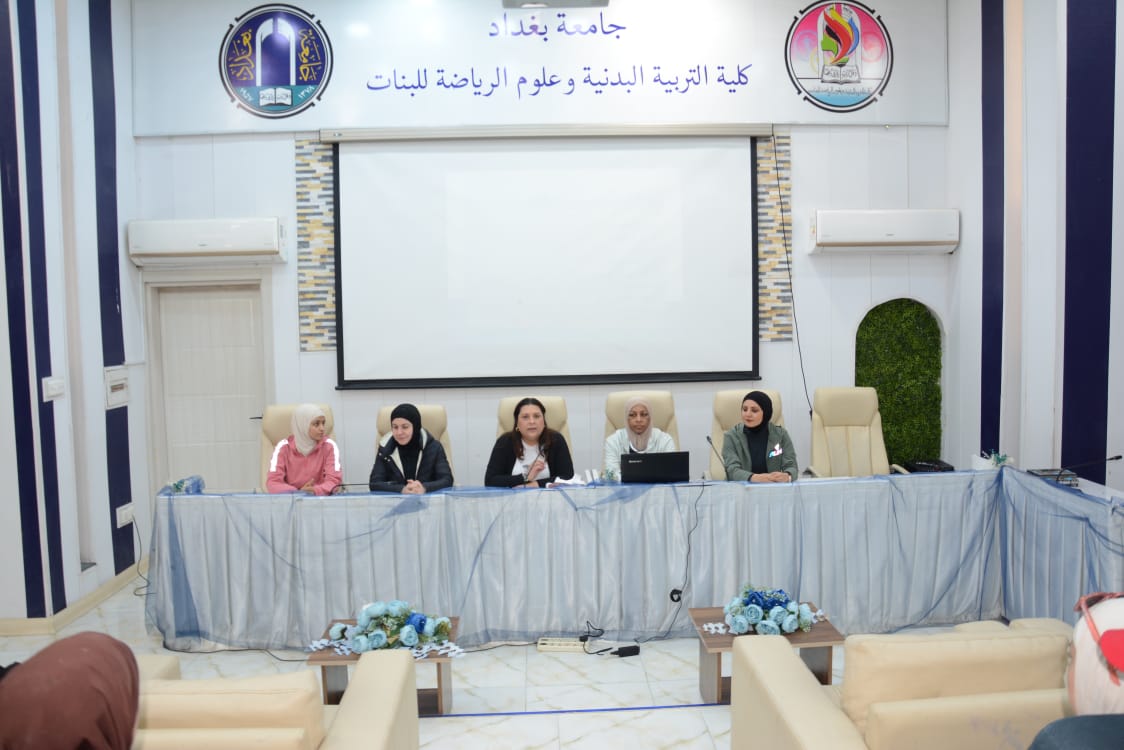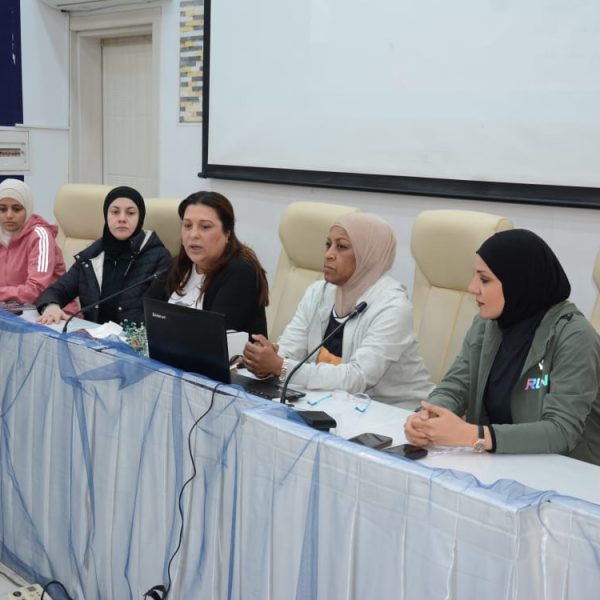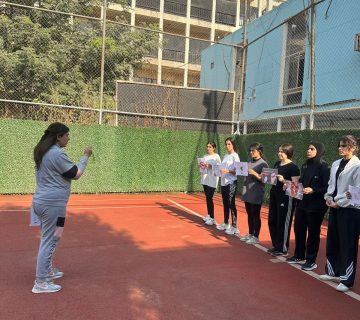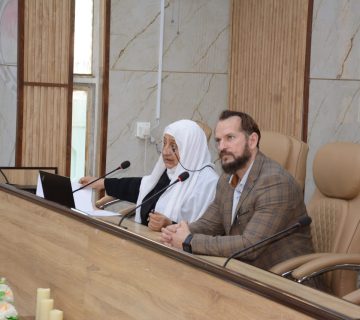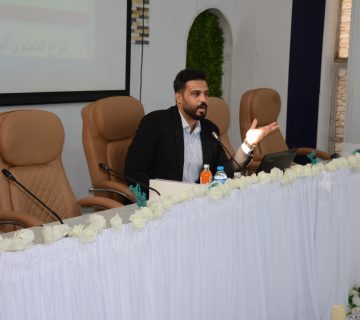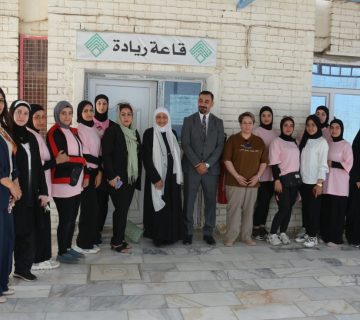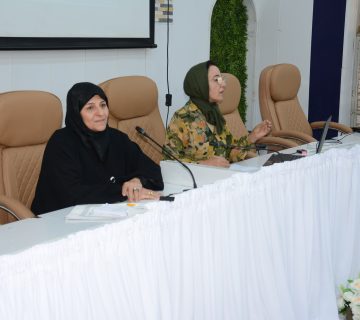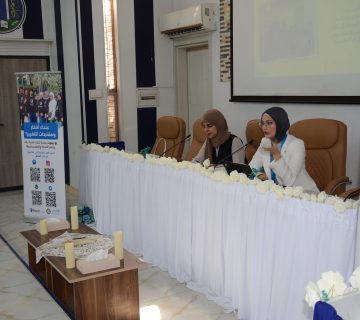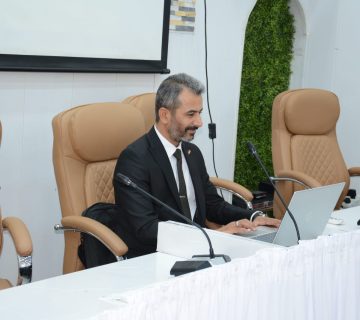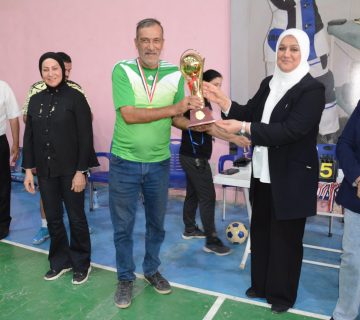The Continuing Education Unit at the College of Physical Education and Sports Sciences for Girls, University of Baghdad, organised a specialised officiating course in athletics. Members of the scientific committee for track and field within the Individual Games Department presented the course. It aimed to familiarise participants with successful and unsuccessful attempts in athletics events while also providing insights into the latest rule modifications and regulations applied in throwing competitions.
During the course, the scientific committee addressed four major modifications in athletics throwing events:
-
Integration of modern technology:
-
Adoption of digital measurement devices and video analysis systems to improve accuracy and reduce human errors.
-
Implementation of the Laser Measurement System (LMS) for exact distance measurement.
-
Adjustments to legal attempt regulations:
-
Standardization of the landing sector angle to 34.92° across most events.
-
Allowing athletes to remain inside the throwing circle or runway for a more extended period, provided they do not step out illegally when completing the throw.
-
Enhancements to throwing equipment:
-
Improvements in the materials used for javelins, discs, and hammers to increase stability and balance during flight.
-
Reduction of javelin flexibility to ensure a more direct landing, facilitating accurate measurement.
-
Increase in the number of attempts:
-
Athletes in qualifying rounds are now allowed four attempts instead of three, giving them a more significant opportunity to improve their results.
The course also highlighted the main reasons for failed attempts, which include:
-
Stepping out of the throwing circle or runway illegally.
-
Landing the implement outside the legal sector (34.92° angle).
-
Executing an improper throwing technique.
-
Exceeding the 60-second time limit per attempt.
Additionally, the instructors provided an overview of long jump and triple jump events, emphasising the importance of meeting international standards for the approach track, take-off board, and landing pit.
-
Approach track: At least 40 meters long and 1.22 meters wide
-
Take-off board: 1.22 meters long and 20 cm wide
-
Sandpit: Minimum length of 7 meters and width between 2.75 and 3 meters
Furthermore, the course covered track event measurements, starting with sprints (100m, 200m, 400m), moving to middle-distance races (800m, 1500m), and long-distance events (5000m, 10,000m), up to marathons.
The course concluded with recommendations emphasising:
-
Precision in result recording, as it plays a crucial role in achieving sports excellence.
-
Reliance on modern technology to ensure more reliable and accurate outcomes.
-
Keeping students updated on recent developments in officiating and performance assessment.
This course aligns with Goal 4 of the Sustainable Development Goals (SDGs), which advocates for quality and inclusive education for all.
The Continuing Education Unit at the College of Physical Education and Sports Sciences for Girls, University of Baghdad, organised a specialised officiating course in athletics. Members of the scientific committee for track and field within the Individual Games Department presented the course. It aimed to familiarise participants with successful and unsuccessful attempts in athletics events while also providing insights into the latest rule modifications and regulations applied in throwing competitions.
During the course, the scientific committee addressed four major modifications in athletics throwing events:
-
Integration of modern technology:
-
Adoption of digital measurement devices and video analysis systems to improve accuracy and reduce human errors.
-
Implementation of the Laser Measurement System (LMS) for exact distance measurement.
-
Adjustments to legal attempt regulations:
-
Standardization of the landing sector angle to 34.92° across most events.
-
Allowing athletes to remain inside the throwing circle or runway for a more extended period, provided they do not step out illegally when completing the throw.
-
Enhancements to throwing equipment:
-
Improvements in the materials used for javelins, discs, and hammers to increase stability and balance during flight.
-
Reduction of javelin flexibility to ensure a more direct landing, facilitating accurate measurement.
-
Increase in the number of attempts:
-
Athletes in qualifying rounds are now allowed four attempts instead of three, giving them a more significant opportunity to improve their results.
The course also highlighted the main reasons for failed attempts, which include:
-
Stepping out of the throwing circle or runway illegally.
-
Landing the implement outside the legal sector (34.92° angle).
-
Executing an improper throwing technique.
-
Exceeding the 60-second time limit per attempt.
Additionally, the instructors provided an overview of long jump and triple jump events, emphasising the importance of meeting international standards for the approach track, take-off board, and landing pit.
-
Approach track: At least 40 meters long and 1.22 meters wide
-
Take-off board: 1.22 meters long and 20 cm wide
-
Sandpit: Minimum length of 7 meters and width between 2.75 and 3 meters
Furthermore, the course covered track event measurements, starting with sprints (100m, 200m, 400m), moving to middle-distance races (800m, 1500m), and long-distance events (5000m, 10,000m), up to marathons.
The course concluded with recommendations emphasising:
-
Precision in result recording, as it plays a crucial role in achieving sports excellence.
-
Reliance on modern technology to ensure more reliable and accurate outcomes.
-
Keeping students updated on recent developments in officiating and performance assessment.


